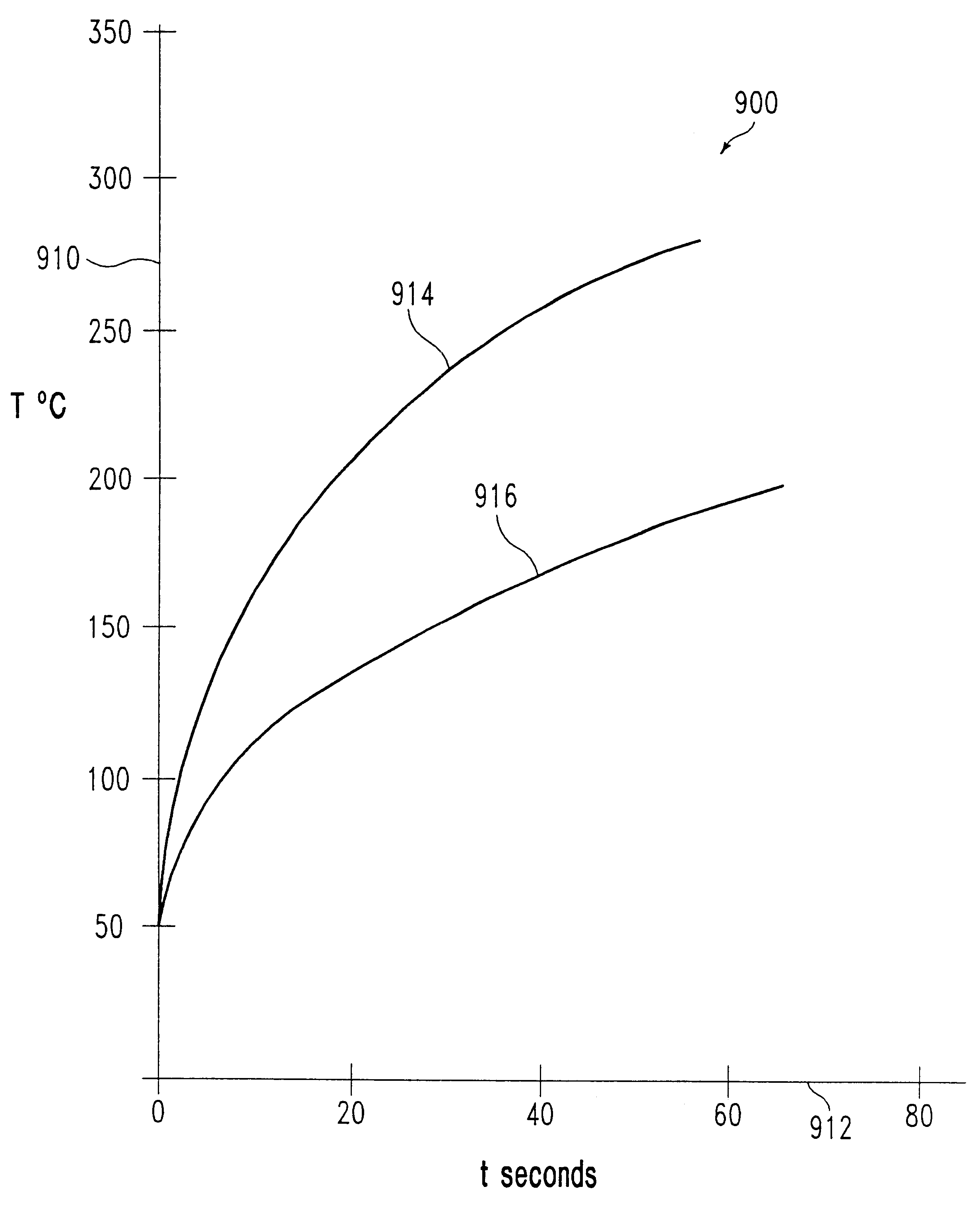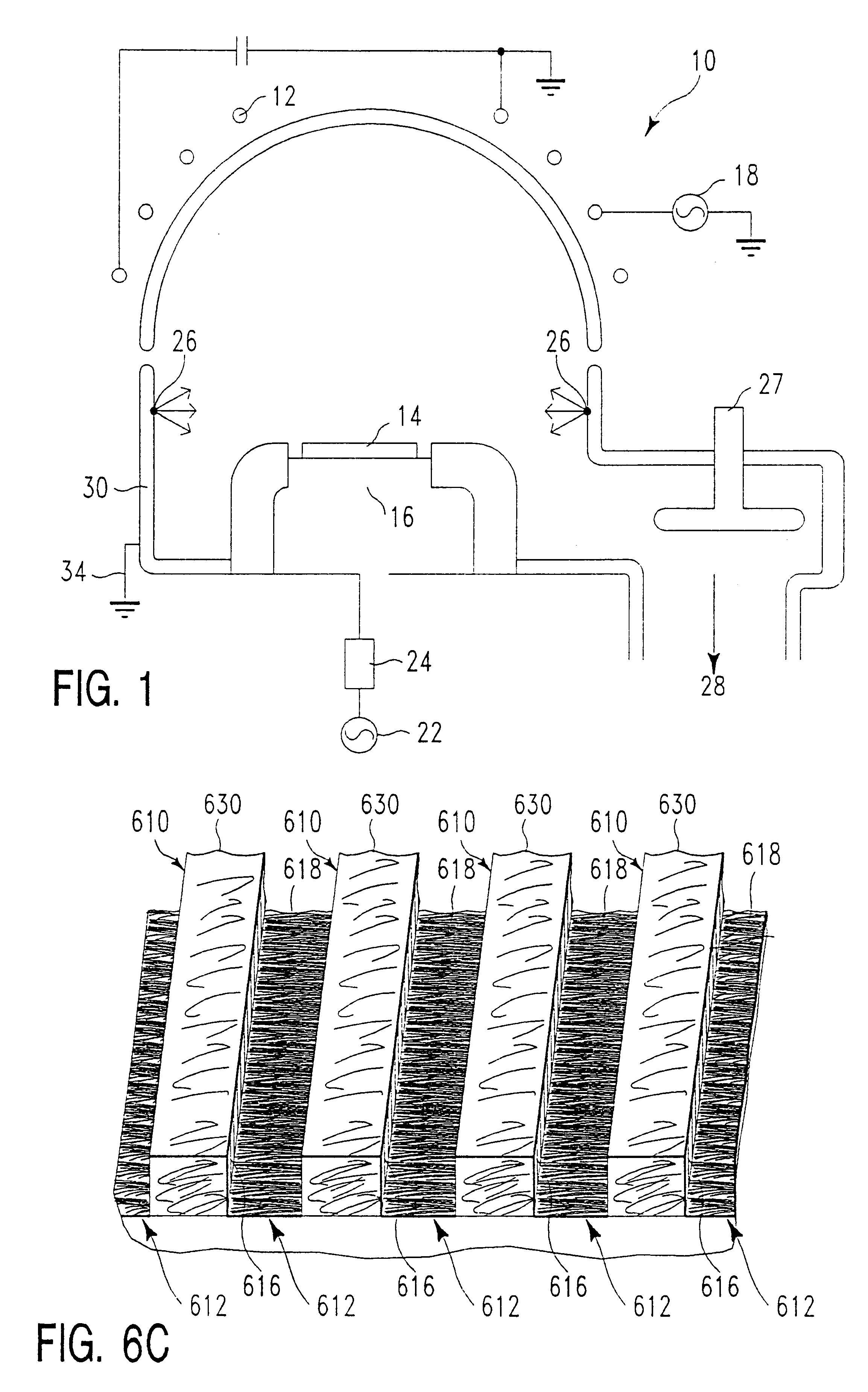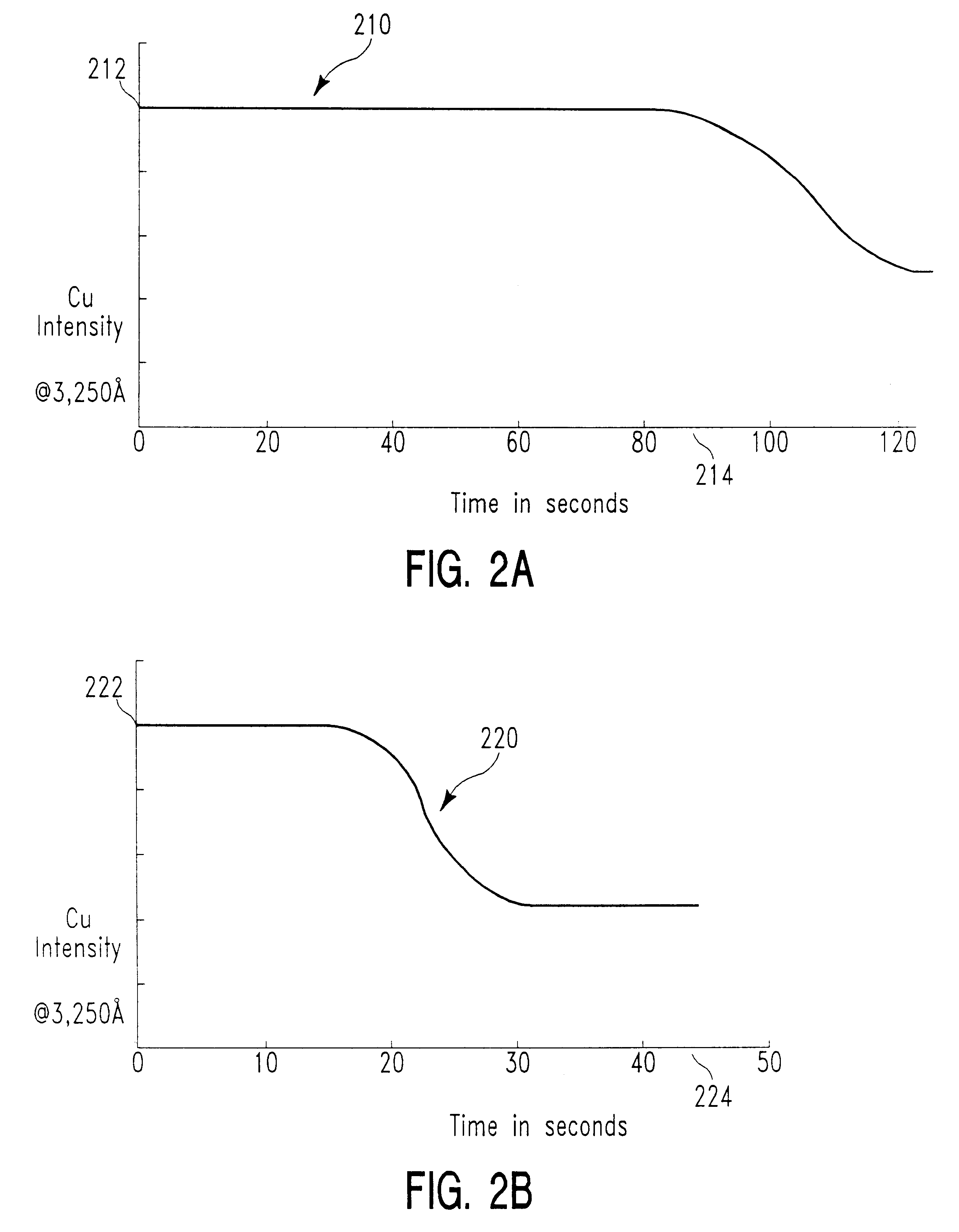Method of heating a semiconductor substrate
a technology of semiconductor substrates and heat dissipation chambers, which is applied in the direction of vacuum evaporation coatings, manufacturing tools, coatings, etc., can solve the problems of difficult to obtain substrate planarization, difficult to achieve the effect of semiconductor substrate heating, and high cos
- Summary
- Abstract
- Description
- Claims
- Application Information
AI Technical Summary
Problems solved by technology
Method used
Image
Examples
example two
Selectivity
We have determined that, using the substrate and process variables specified with reference to FIG. 2A, the selectivity ratio of copper to silicon oxide hard mask is about 4:1 (i.e., copper etches four times faster than the hard mask).
Further, the effect of process variables on this selectivity were investigated. In particular, the effect of process chamber pressure, plasma source power, and bias power were investigated. Again, HCl was the principal source of etchant reactive species; the plasma feed gas was of the composition specified with reference to FIG. 3A above; the substrate stack was the same; the pattern etched was the same; and all process variables were the same with the exception of the variable investigated. Curve 410 of FIG. 4A shows the selectivity ratio 412 of copper to silicon oxide hard mask as a function of process chamber pressure 414, with the selectivity ratio increasing with an increase in chamber pressure, at least up to 20 mT.
Curve 420 of FIG. 4B...
example three
Comparitive Example
As previously described, we have determined that the etch process typically applied to aluminum does not work well for copper. This is not to say that such a process cannot be made to work if all of the variables are carefully optimized. However, the method of the present invention offers a wider process window.
In reviewing the March 1995 article "Dry Etching Technique for Subquarter-Micron Copper Interconnects" by Igarashi et al. where the etch process recommended is a variation of the process used for aluminum, we noticed that the interior of the etched copper features appeared to be hollow at some locations. To determine the cause of this phenomenon, we attempted to reproduce the results of Igarashi et al. This example is provided as a comparitive example, since the process was carried out in the same equipment in which we achieved the elimination of the interior corrosion of the copper features.
The particular etched substrate illustrated in FIGS. 5A and 5B was...
example four
A Preferred Embodiment of the Present Invention
As disclosed in the Summary of the Invention, the preferred embodiment of the invention provides for the use of hydrogen chloride (HCl) and / or hydrogen bromide (HBr) as the sole or principal source of the reactive species used in etching copper. Dissociation of the HCl and / or HBr provides the large amounts of hydrogen necessary to protect the copper feature etched surfaces from penetration by reactive species adjacent the etched surface. Additional hydrogen-comprising gas may be added to the plasma feed gas which comprises the HCl and / or HBr when the reactive species density in the etch process chamber is particularly high.
In this example, under the conditions specified, it is not necessary to add additional hydrogen-comprising gas to the plasma feed gas. Although this Example is for the use of HCl as the principal source of reactive species, HBr could be substituted in this example with equivalent results.
In this Example, the plasma fe...
PUM
| Property | Measurement | Unit |
|---|---|---|
| feature sizes | aaaaa | aaaaa |
| sizes | aaaaa | aaaaa |
| temperature | aaaaa | aaaaa |
Abstract
Description
Claims
Application Information
 Login to View More
Login to View More - R&D
- Intellectual Property
- Life Sciences
- Materials
- Tech Scout
- Unparalleled Data Quality
- Higher Quality Content
- 60% Fewer Hallucinations
Browse by: Latest US Patents, China's latest patents, Technical Efficacy Thesaurus, Application Domain, Technology Topic, Popular Technical Reports.
© 2025 PatSnap. All rights reserved.Legal|Privacy policy|Modern Slavery Act Transparency Statement|Sitemap|About US| Contact US: help@patsnap.com



